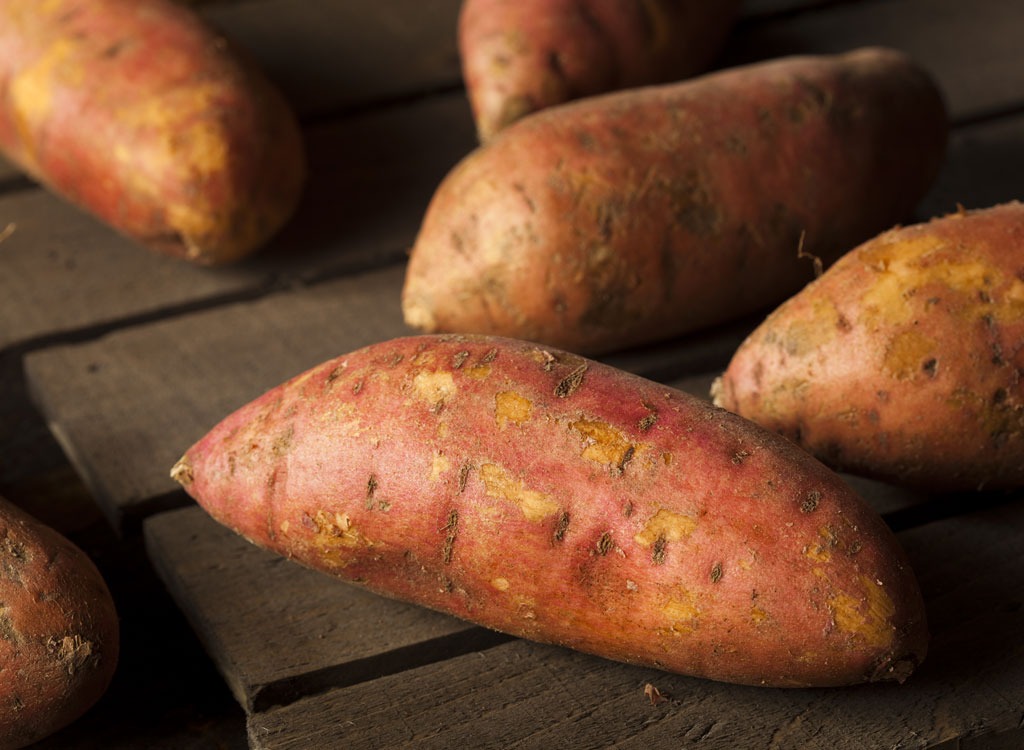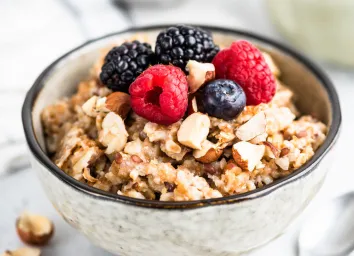What’s the Difference Between Yams and Sweet Potatoes?

How many times have you asked yourself the question, “Are sweet potatoes and yams the same thing?” Let the confusion come to an end because we’re here to tell you that they’re most certainly not. In fact, they actually have very little in common.
Sweet potatoes and yams not only differ in shape, color, and skin texture, but also in origin. It begs the question why were they ever thought to be the same vegetable in the first place?
Read on to unveil the truth about the two vegetables’ distinctions so you’ll be a pro at telling the difference between yams and sweet potatoes.
First, what is a sweet potato?
The sweet potato is a tuberous root vegetable that is typically long in length and thick in width. The skin of the potato is often orange, but there are many other varieties with yellow, red, brown, purple, and even white skin colors.
Just as the color of the sweet potato’s skin varies, so does its flesh. The two most common types of sweet potatoes offered in American supermarkets are the variety with the golden-beige skin and white flesh as well as the copper-brown skin with orange flesh. The latter is much more prevalent in the U.S. than the former. It’s also much more moist, fluffier, and sweeter than its golden-beige cousin.
The sweet potato’s true origins remain somewhat of an enigma. One theory suggests that they originated in either Central or South America. Today, North Carolina has grabbed the title as the largest sweet potato producer in the country since 1971. Just how many sweet potatoes does North Carolina pump out per year? In 2016, the state’s agricultural force hit their record production: a whopping 1.7 billion pounds. More than half of all sweet potatoes sold in U.S. grocery stores that year had been cultivated in North Carolina.

OK, got it, so then what’s a yam?
Similar to the sweet potato, a yam is also considered a tuber vegetable, but there’s a stark difference in their appearances. The skin of a yam looks and feels like bark—and just as there is a give to bark as it’s being peeled off a tree, the skin of a yam also has some resistance during the peeling process, which is all much different than a sweet potato’s softer skin.
The color of a yam’s flesh also varies. It can be anything from a neutral white or yellow, to a more vibrant purple or pink depending on the maturity of the yam. They taste quite different from the sweet flavor a sweet potato naturally provides. Yams are much drier and have a starchier texture.
Yams have roots in Africa, but also grow in Central America, Southeast Asia, and the Caribbean.
How and why do we confuse them?
The answer is pretty straightforward: deceptive marketing and labeling can easily cause confusion. In the U.S., the Department of Agriculture requires labels that say “yams” to also have “sweet potato,” too.
When sweet potatoes first made their way to America, they were the firmer version with a paler hue. Then, once a softer variety came about (the one with the orange hue you’re most familiar with), stores labeled them as yams to make them more distinct from the firm sweet potato people had known.
For some more background, sometime in the 1930s, faculty from the horticulture department at Louisiana State University set out to grow a sweet potato with a moister flesh that was more desirable to eat. (The former version was supposedly too dry and stringy.) This new and improved sweet potato was then deemed “Louisiana yams,” which became the jumping off point to calling sweet potatoes “yams.” The confusion between the two vegetables has yet to cease.
If you’re looking for a real yam, your best bet is to find it in a specialty grocer because they’re imported and harder to come by. Your local supermarket carries the orange sweet potatoes you know and love to use in side dishes and desserts.
Now you’re fully armed with all the information needed to tell these veggies apart next time you head out to the grocery store. And hey, it’s clearly an impressive skill to have!








